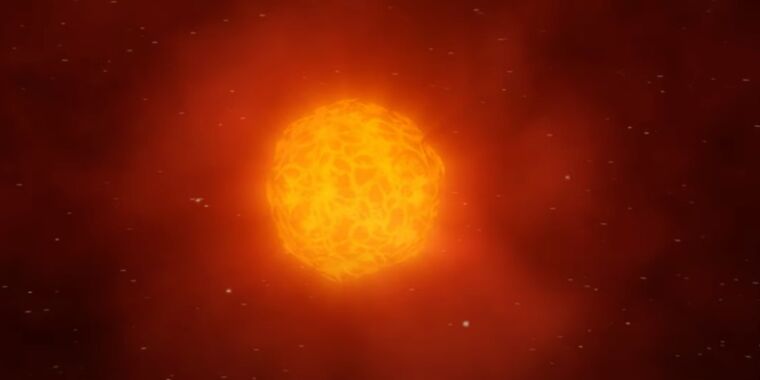
That dimming was eventually attributed to a cold spot and a stellar "burp" that shrouded the star in interstellar dust. Now, new observations from the Hubble Space Telescope and other observatories have revealed more about the event that preceded the dimming.
It seems Betelgeuse suffered a massive surface mass injection (SME) event in 2019, blasting off 400 times as much mass as our Sun does during coronal mass ejections (CMEs).While the cycles are easy to track with ground-based telescopes, the shifts don't cause the sort of radical changes in the star's light that would account for the changes seen during the dimming event.
As we've reported previously, astronomers first noticed the strange, dramatic dimming in the light from Betelgeuse in December 2019.Several months later, they had narrowed the most likely explanations to two: a short-lived cold patch on the star's southern surface (akin to a sunspot) or a clump of dust making the star seem dimmer to observers on Earth.
The ESO team concluded that a gas bubble was ejected and pushed further out by the star's outward pulsation—sort of like a stellar "burp." When a convection-driven cold patch appeared on the surface, the local temperature decrease was sufficient to condense the heavier elements (like silicon) into solid dust, forming a veil that obscured the star's brightness in its southern hemisphere.According to the authors of this latest paper, the event was significantly more than a mere stellar burp.That produced the cold patch covered by the dust cloud, which explains the dimming.
We're watching stellar evolution in real time." The Webb Space Telescope may be able to detect the ejected material in infrared light as it continues moving away from the star, which might tell astronomers even more about what happened—and its implications for other similar stars.